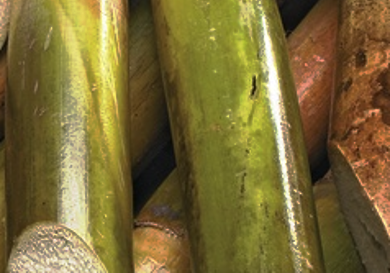Biodiesel has been shown to give engine performance that is comparable to that of conventional diesel fuel, while reducing the engine emissions of particulates, hydrocarbons, and carbon monoxide. US biodiesel demand increased from 32 million litres in 2001 to 5.1 billion litres in 2013. The major US source of biodiesel has been and continues to be soybean. However, the main driver for the high production cost of biodiesel from vegetable oils is the feedstock cost.
Haibo Huang, Virginia Polytechnic Institute and State University, Blacksburg, VA, USA, and Stephen Long and Vijay Singh, University of Illinois, Urbana, IL, USA, analyzed the potential of lipid-producing sugarcane as an alternative feedstock for both biodiesel and bioethanol. The team cooperates with researchers at the University of Florida, USA, and at Brookhaven National Laboratory, NY, USA, who used metabolic engineering strategies to accumulate triacylglycerides, the vegetable oil precursor of biodiesel, in sugarcane [1]. Sugarcane is a very productive plant with higher yields than soybean. In a lab-scale production, the team accumulated 5 % triacylglycerides and 10 % total fatty acids in engineered sugarcane. The lipids of this newly created crop are used to produce biodiesel and the remaining sugars are used to produce bioethanol.
The team also conducted field trials in North Florida, USA, to test the large-scale production of the engineered lipid-producing sugarcane (lipid-cane). Lipid-cane can produce more than 10 times the amount of biodiesel per hectare than soybean. Therefore, according to the researchers, lipid-cane could be a promising alternative feedstock for biodiesel and ethanol production.
- Techno-economic analysis of biodiesel and ethanol co-production from lipid-producing sugarcane,
H. Huang, S. Long, V. Singh,
Biofuels, Bioprod. Bioref. 2016.
DOI: 10.1002/bbb.1640
References
- [1] Metabolic engineering of sugarcane to accumulate energy-dense triacylglycerols in vegetative biomass,
Janice Zale, Je Hyeong Jung, Jae Yoon Kim, Bhuvan Pathak, Ratna Karan, Hui Liu, Xiuhua Chen, Hao Wu, Jason Candreva, Zhiyang Zhai, John Shanklin, Fredy Altpeter,
Plant Biotechnol. J. 2016, 14, 661–669.
DOI: 10.1111/pbi.12411




